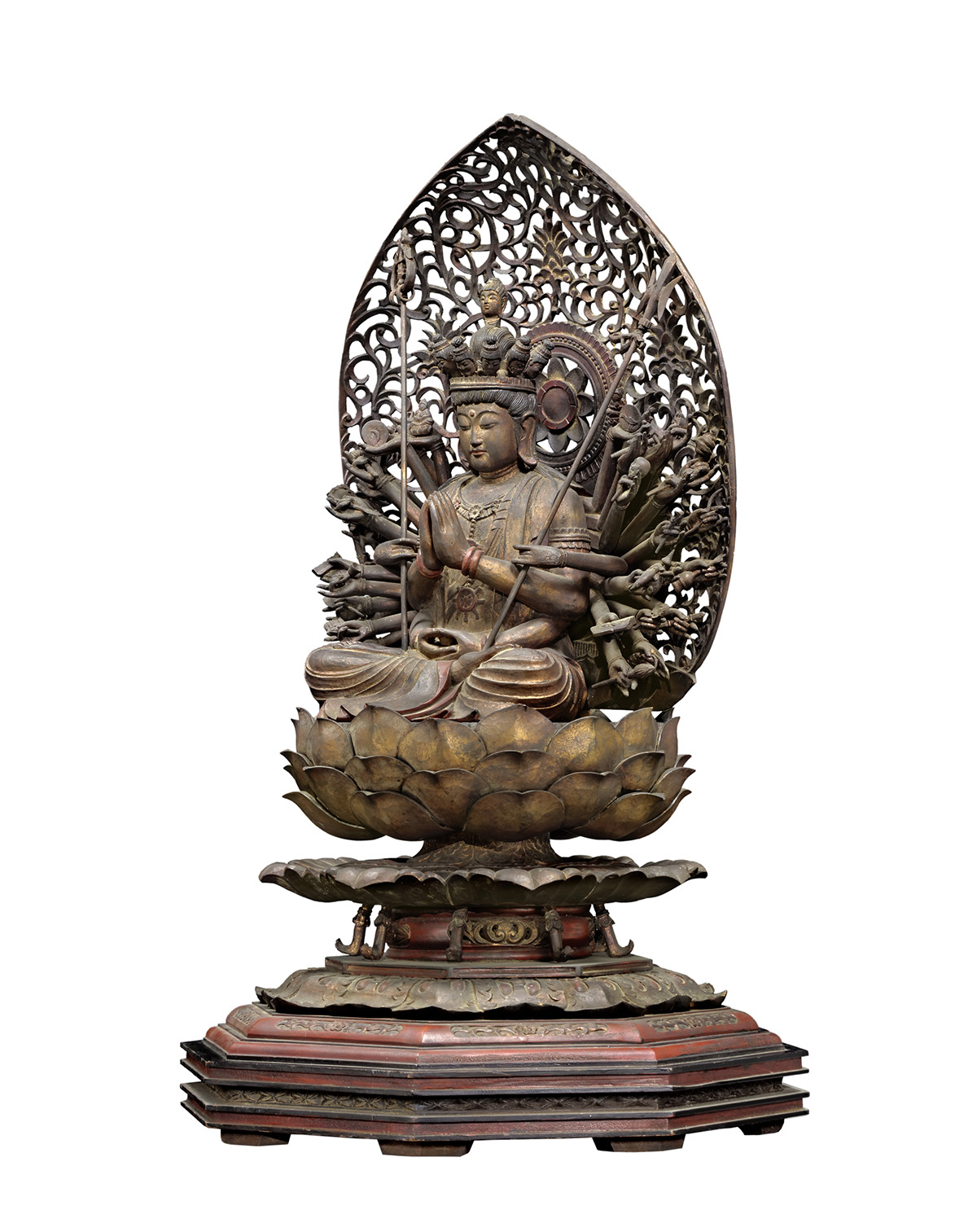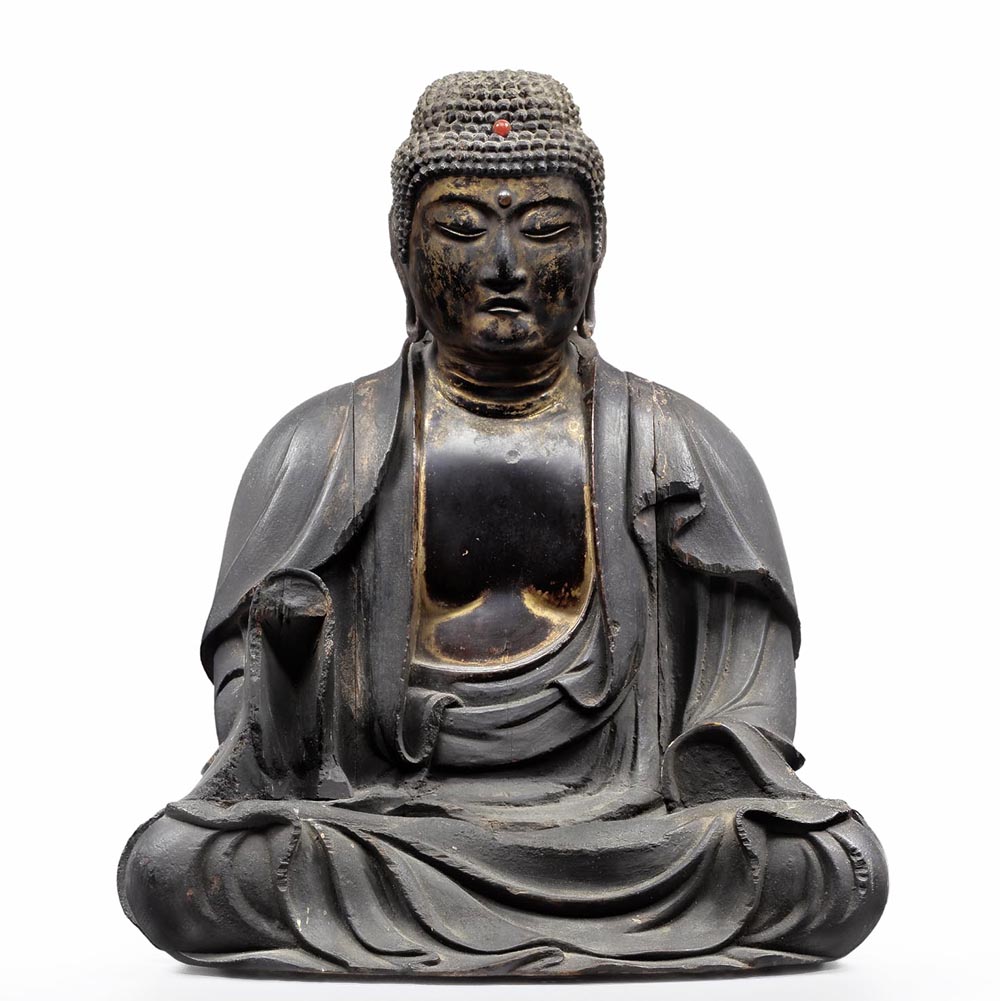Senjyu-Kannon
Statuary
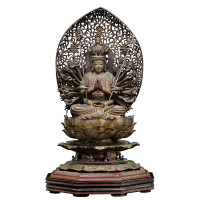
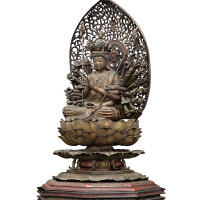
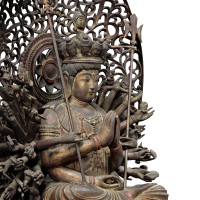
- Sold
-
Material
Wood
-
Size
45 x 78 (h) cm
-
Period
Momoyama-Edo period (16-17th century)
Description
Thousand Armed Avalokiteshwara is generally called Senjyu-Kannon in Japanese.
Senjyu means “thousand armed”. This name originated sahasrabhuja ārya avalokitezvara in Sanskrit.
He is supposed to have a thousand arms which express Avalokiteshwara’s mercy to save all living things, and he has an eye on each palm. He belongs to quite the upper class, and so he is nicknamed “the King of Lotus Flower”.
He is portrayed as a seated or standing figure. While some statues have a thousand arms really, general ones have 42 arms and eleven heads. It is said that each arm except for two arms joining in prayer saves 25 worlds. It means, “25 multiplied by 40 is 1,000”. As mentioned above, Senjyu-kannon join his two hands in front of the chest, and the other two in front of belly. The other 38 hands hold each belonging which are the tools to save the worlds and people. The belongings are explained in the old sacred books as ‘Fragmentary Volume of Senju Sengan Daranikyo Sutra’ (a national treasure, sutra dated 8th century), and the modelling of Senjyu-kannon were based on these scriptures.

